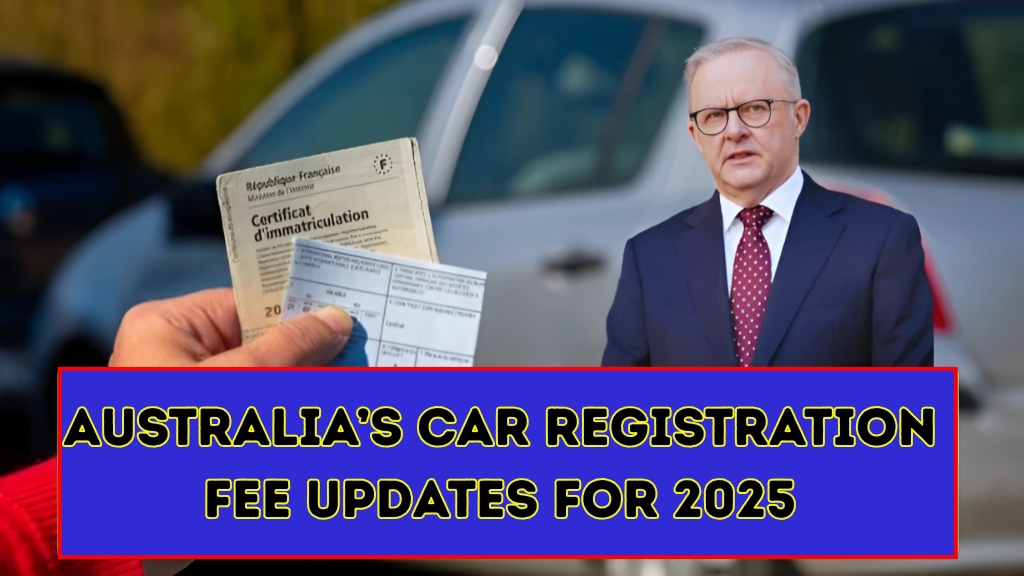Car Registration Fee: Owners of registered passenger cars in Australia are staring down yet another year of shifting fees. Every state and territory is rolling out its own changes for 2025, and knowing the details is now more vital than breathing for anyone who wants to keep their budget modest. Registration still hogs a monster chunk of the running-cost pie, costing the average motorist in capital cities $1,670.24 a year. That’s why a second’s delay reviewing the figures could give the wallet a nasty surprise.
Queensland’s Big Spike
Queenslanders, brace yourselves. The state’s 3.4% climb in rego costs officially kicks in on September 16, 2025. That’s what the state calls an annual change-by-incision, driven by the nifty acronym GIR—the Government Indexation Rate. A second year of the same climb, by the way.
So, what will the actual dollars look like when your green slip drops in the mail? If you own a light sedan that takes up 1-3 cylinders on the rego label, you’ll be handing over 745.05.If you’re rolling in abeast that gulps fuel through 9−12 cylinders the bill heads upto —yep, that number already sneaks in the compulsory third-party insurance. Here’s the weird part: the number standing in for an electric vehicle will magically sit, for the billing department, alongside that tiny 1-3 cylinder grouping. The dollars, assume a hike, too.
Fee Structures by State
So, Australia continues its finest tradition of vehicle registration fees—each state, an island of its own sail, unique to the last cent. Here’s the lay of the land for 2025 and in the same breath the thing to dodge when your state’s rules make you go: “Seriously? That again?”
New South Wales: Car Costs still lean on vehicle weight. Current lowball number? Just 334. Ball 1,476, and you could own a touring rig that carries the mass of a steel giraffe.
In NSW, you still need to get a separate CTP insurance, known as a Green Slip, before you can finish registering your vehicle.
Victoria keeps a distance-based fee system. If you live in Melbourne’s metro area, you’ll face the top rate of 906.60. If you live in outer Melbourne, you’l lpay , while rural residents have the lowest rate of $780.10. One convenient feature is that registration fees in the state already include CTP insurance.
Western Australia bases fees on the weight of the vehicle. You’ll pay $27.56 for every 100kg, plus a small paperwork charge, which tends to benefit lighter cars.
South Australia mixes location and cylinder size. For 4-cylinder cars in the metro area, the fee is 670.Ifyou’reinaruralzone,thatdropsto545.
Additional Costs to Consider
Apart from the basic registration figure, expect some extras in 2025:
Transferring your reg from another state or registering a new vehicle brings transfer fees and a stamp duty of 2-4% on the purchase price.
Cars that need an inspection before registration—like imports, vehicles that have been heavily repaired, or those that have been off the road for a while—will face extra inspection fees.
If you want a personalised plate, you’re looking at a few hundred extra dollars at the very least.
Concessions Provide Relief for Eligible Drivers
The good news is that concession programs remain in every state, offering welcome savings to those who qualify.
In Queensland, concession card holders enjoy big savings; the yearly rego fee on a typical four-cylinder car drops to just 186.40 when they show the right card,while the regular the wise move for anyone reaching for zoom keys is to double-check that their concession entitlement is logged with the state’s transport authority.
Most other states feature similar programs, so taking a minute to confirm concession status can result in handy savings right across Australia.
Planning Ahead: Keeping Fuel in the Budget
Registration costs just keep climbing, so it’s smart for Australian drivers to tuck these bills into the family yearly budget. Folks in the regions are already shelling out about 1,602.64ayear,whichworksoutto30.82 a week, for rego, CTP insurance, and license fees.
Drivers grappling with fast rising costs can lighten the load; many states have payment plans that spread rego costs over the year, instead of one shock payment that stings all at once.
With electric and hybrid cars sliding into the nation’s driveways, state governments are likely to keep tinkering with fees; the goal is to keep roads funded while also nudging drivers towards cleaner wheels.
Knowing your state’s latest rules and stashing fees in the family budget now will help drivers keep road-ready in 2025 and well beyond.




